What factors are taken into account in the calculations
The decrease in temperature in the house occurs due to the penetration of cold through the walls, floor, ceiling, windows and doors, as well as the flow of cold air through the ventilation ducts. The power of the gas boiler must compensate for all heat losses and maintain a constant set temperature in all living quarters
When making calculations, the following factors must be taken into account:
- Floor area (floor and ceiling), fences (walls), roofing and glazing.
- Thermal conductivity and thickness of the materials used to build the building. In this case, facing and finishing materials are taken into account. Coefficient tables are easy to find on the Internet or specialized reference books, this value is calculated in W / (m * C °).
- The minimum temperature in this region during the cold season.
- Average room temperature for the comfort of the people living in the building.
Heating equipment store consultants often recommend calculating the power of a gas boiler based on the following ratio: 40 W per cubic meter of volume, or 1 kW per 10 m² with a standard room height of 2.5-2.6 meters. However, such calculations are rather approximate and as a result, the purchased equipment has a power reserve of 10-25%, depending on the situation, which affects its price and installation method.
When calculating the heating power, it must be borne in mind that when ventilating, heat loss can reach 15%, low thermal resistance of the walls will lead to a loss of another 35%, non-insulated and low-quality windows and doors - 10-15%, floor - 15%, and roof - up to 25% ...
We take into account heat loss
Note that regardless of whether the power of an electric boiler, a gas boiler, a diesel or wood-fired boiler is calculated, in any case, the operation of the heating system will be accompanied by heat losses:
- It is necessary to ventilate the premises, but if the windows are open all the time, the house will lose about 15% of its energy.
- If the walls are poorly insulated, then 35% of the heat will go away.
- 10% of the heat will go through the window openings, and even more if the frames are of the old model.
- If the floor is not insulated, then 15% of the heat will be given to the basement or ground.
- 25% of the heat will go through the roof.
Before calculating a heating boiler, it should be borne in mind that if at least one of these factors takes place, then this should be reflected in the calculations.
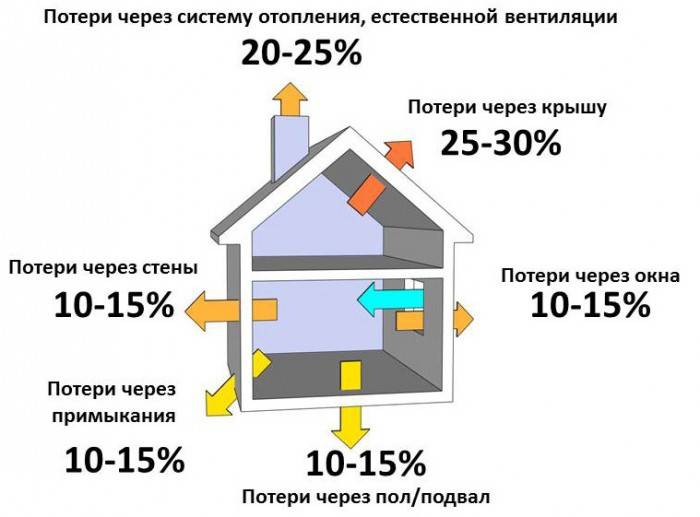 Heat loss at home
Heat loss at home
How to calculate the power of a gas boiler: 3 schemes of varying complexity
How to calculate the power of a gas boiler for the given parameters of the heated room? I know of at least three different methods that give different levels of reliability of the results, and today we will get to know each of them.
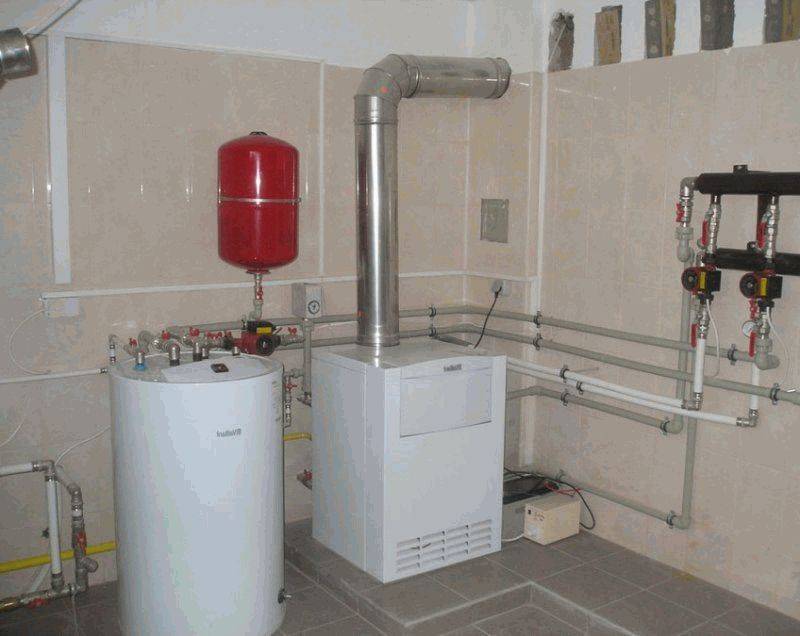
The construction of a gas boiler room begins with the calculation of heating equipment.
general information
Why do we calculate the parameters specifically for gas heating?
The fact is that gas is the most economical (and, accordingly, the most popular) heat source. A kilowatt-hour of thermal energy obtained during its combustion costs the consumer 50-70 kopecks.
For comparison - the price of a kilowatt-hour of heat for other energy sources:
In addition to efficiency, gas equipment attracts with ease of use. The boiler requires maintenance no more than once a year, does not need kindling, cleaning the ash pan and replenishing the fuel supply. Devices with electronic ignition work with external thermostats and are able to automatically maintain a constant temperature in the house, regardless of the weather.
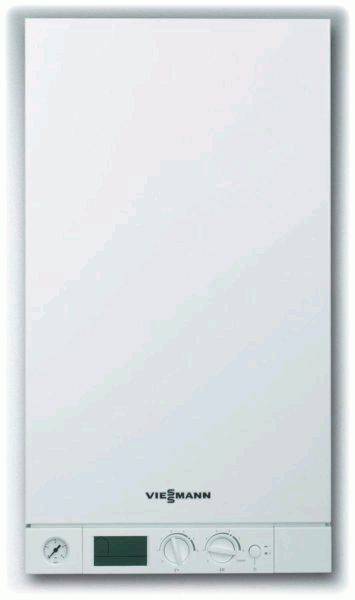
The main gas boiler, equipped with electronic ignition, combines maximum efficiency with ease of use.
Is the calculation of a gas boiler for a home different from the calculation of a solid fuel, liquid fuel or electric boiler?
In general, no. Any heat source must compensate for heat loss through the floor, walls, windows and ceiling of the building.Its thermal power has nothing to do with the energy carrier used.
In the case of a double-circuit boiler supplying the house with hot water for household purposes, we need a reserve of power to heat it up. Excess power will ensure the simultaneous flow of water in the DHW system and heating the coolant for heating.
Calculation methods
Scheme 1: by area
How to calculate the required power of a gas boiler from the area of the house?
We will be helped in this by the normative documentation of half a century ago. According to the Soviet SNiP, heating should be designed at the rate of 100 watts of heat per square meter of the heated room.

Estimation of heating power by area. One square meter is allocated 100 watts of power from the boiler and heating appliances.
Let's, for example, perform a power calculation for a house measuring 6x8 meters:
- The area of the house is equal to the product of its overall dimensions. 6x8x48 m2;
- With a specific power of 100 W / m2, the total boiler power should be 48x100 = 4800 watts, or 4.8 kW.
The choice of the boiler power by the area of the heated room is simple, understandable and ... in most cases it gives the wrong result.
Because he neglects a number of important factors that affect real heat loss:
- The number of windows and doors. More heat is lost through glazing and doorways than through a main wall;
- The height of the ceilings. In Soviet-built apartment buildings, it was standard - 2.5 meters with a minimum error. But in modern cottages you can find ceilings with a height of 3, 4 or more meters. The higher the ceiling, the larger the heated volume;
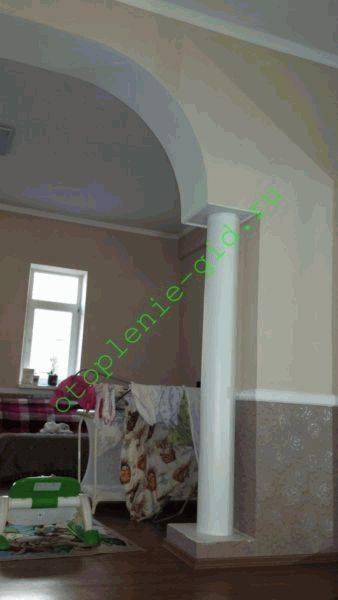
The photo shows the first floor of my house. Ceiling height 3.2 meters.
Climatic zone. With the same quality of thermal insulation, heat loss is directly proportional to the difference between indoor and outdoor temperatures.
In an apartment building, heat loss is affected by the location of the dwelling relative to the outer walls: end and corner rooms lose more heat. However, in a typical cottage, all rooms share walls with the street, so the corresponding correction factor is included in the baseline heat output.

Corner room in an apartment building. The increased heat loss through the outer walls is compensated by the installation of a second battery.
Scheme 2: by volume, taking into account additional factors
How to calculate with your own hands a gas boiler for heating a private house, taking into account all the factors I mentioned?
First and foremost: in the calculation, we take into account not the area of the house, but its volume, that is, the product of the area by the height of the ceilings.
- The basic value of the boiler power per one cubic meter of the heated volume is 60 watts;
- The window increases heat loss by 100 watts;
- The door adds 200 watts;
- Heat loss is multiplied by the regional coefficient. It is determined by the average temperature of the coldest month:
2 We calculate the power by area - the basic formula
The simplest way to calculate the required power of a heat generation device is by the area of the house. When analyzing the calculations carried out over the years, a pattern was revealed: 10 m2 of the area can be heated properly using 1 kilowatt of heat energy. This rule is valid for buildings with standard characteristics: a ceiling height of 2.5–2.7 m, average insulation.
If the housing fits into these parameters, we measure its total area and approximately determine the power of the heat generator. The calculation results are always rounded up and slightly increased in order to have some power in stock. We use a very simple formula:
W = S × Wsp / 10:
- here W is the required power of the heat boiler;
- S is the total heated area of the house, taking into account all residential and utility rooms;
- Wud - specific power required for heating 10 square meters, adjusted for each climatic zone.

Method for calculating the required power of the heat generation device
For clarity and greater clarity, we will calculate the power of the heat generator for a brick house. It has dimensions of 10 × 12 m, we multiply and get S - a total area of 120 m2. Specific power - Wud is taken as 1.0. We make calculations according to the formula: the area of 120 m2 is multiplied by the specific power of 1.0 and we get 120, we divide by 10 - as a result, 12 kilowatts. It is a heating boiler with a capacity of 12 kilowatts that is suitable for a house with average parameters. This is the initial data that we will correct in the course of further calculations.
Calculation taking into account the area of \ u200b \ u200bthe room
How do you include information about ceiling heights or climate in this formula? This has already been taken care of by specialists who have derived empirically the coefficients that make it possible to make certain adjustments to the calculations.
So, the above rate is 1 kW per 10 sq. meters - implies a ceiling height of 2.7 meters. For higher ceilings, a correction factor will need to be calculated and recalculated. For this the ceiling height must be divided by standard 2.7 meters.
We propose to consider a specific example: the ceiling height is 3.2 meters. The calculation of the coefficient looks like this: 3.2 / 2.7 = 1.18. This figure can be rounded up to 1.2. How to use the resulting figure? Recall that for heating a room with an area of 160 sq. meters need 16 kW of power. This indicator must be multiplied by a factor of 1.2. The result is 19.2 kW (round up to 20 kW).
Further, climatic features should also be added. For Russia, there are certain coefficients depending on the location:
- in the northern regions 1.5–2.0;
- in the Moscow region 1.2–1.5;
- in the middle lane 1.0–1.2;
- in the south, 0.7–0.9.
However, this is not all. The above values can be considered correct if the factory or home-made boiler will work exclusively for heating. Suppose that you want to assign it the functions of heating water. Then add another 20% to the final figure. Take care of the reserves of power for peak temperatures in severe frosts, and this is another 10%.
You will be surprised at the results of these calculations. Here are some specific examples.
A house in central Russia with heating and hot water supply will require 28.8 kW (24 kW + 20%). In the cold, another 10% of the power is added 28.8 kW + 10% = 31.68 kW (round up to 32 kW). As you can see, this last figure is 2 times higher than the original one.
Calculations for a house in the Stavropol Territory will be slightly different. If you add the power for heating water to the above indicators, then you will get 19.2 kW (16 kW + 20%). And another 10% of the "reserve" for the cold will give you a figure of 21.12 kW (19.2 + 10%). We round up to 22 kW. The difference is not so great, but, nevertheless, these indicators must be taken into account.
As you can see, when calculating the power of a heating boiler, it is very important to take into account at least one additional indicator
Please note that the heating formula for an apartment and for a private house is different from each other. In principle, when calculating this indicator for an apartment, you can follow the same path, taking into account the coefficients that reflect each factor
However, there is an easier and faster way that will allow you to make adjustments in one go.
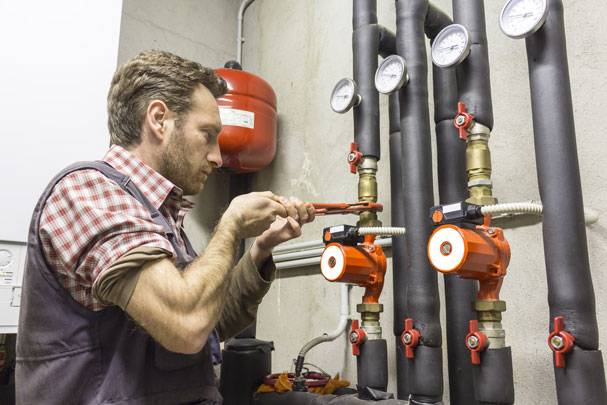
For apartments, this figure will be different. If there is a heated room above your apartment, then the coefficient is 0.7, if you live on the top floor, but with a heated attic - 0.9, with an unheated attic - 1.0. How to apply this information? The power of the boiler, which you calculated according to the above formula, needs to be corrected using these coefficients. Thus, you will receive reliable information.
Before us are the parameters of an apartment located in a city in central Russia. To calculate the volume of the boiler, we need to know the area of the apartment (65 square meters) and the height of the ceilings (3 meters).
The first step: determining the power by area - 65 m2 / 10 m2 = 6.5 kW.
Second step: correction for the region - 6.5 kW * 1.2 = 7.8 kW.
Third step: the gas boiler will be used to heat water (add 25%) 7.8 kW * 1.25 = 9.75 kW.
Fourth step: correction for severe cold (add 10%) - 7.95 kW * 1.1 = 10.725 kW.
The result needs to be rounded off, and you get 11 kW.
Summing up, we note that these calculations will be equally correct for any heating boilers, regardless of what type of fuel you use. Exactly the same data is relevant for an electric heater, and for a gas boiler, and for one that runs on a liquid energy carrier. The most important thing is the performance and performance metrics of the device. Heat loss does not depend on its type.
3 Correcting calculations - additional points
In practice, housing with average indicators is not so common, therefore, additional parameters are taken into account when calculating the system. One defining factor - the climatic zone, the region where the boiler will be used - has already been discussed. Here are the values of the coefficient Wsp for all areas:
- the middle band serves as a standard, the specific power is 1–1.1;
- Moscow and Moscow region - multiply the result by 1.2–1.5;
- for the southern regions - from 0.7 to 0.9;
- for the northern regions it rises to 1.5–2.0.
In each zone, we observe a certain spread of values. We act simply - the further south the terrain in the climatic zone, the lower the coefficient; the farther north, the higher.
Here's an example of adjustments by region. Suppose that the house for which the calculations were carried out earlier is located in Siberia with frosts up to 35 °. We take Wwood equal to 1.8. Then the resulting number 12 is multiplied by 1.8, we get 21.6. Round off towards a higher value, 22 kilowatts comes out. The difference with the initial result is almost twofold, and after all, only one amendment was taken into account. So it is necessary to adjust the calculations.
In addition to the climatic conditions of the regions, other corrections are taken into account for accurate calculations: the height of the ceiling and the heat loss of the building. The average ceiling height is 2.6 m. If the height is significantly different, we calculate the value of the coefficient - we divide the actual height by the average. Suppose the height of the ceiling in the building from the previously considered example is 3.2 m. We consider: 3.2 / 2.6 = 1.23, rounded, it turns out 1.3. It turns out that heating a house in Siberia with an area of 120 m2 with 3.2 m ceilings requires a 22 kW × 1.3 = 28.6 boiler, i.e. 29 kilowatts.
It is also very important for correct calculations to take into account the heat loss of the building. Heat is lost in any home, regardless of its design and type of fuel. 35% of warm air can escape through weakly insulated walls, 10% and more through windows
An uninsulated floor will take 15%, and a roof - all 25%. Even one of these factors, if present, should be taken into account. A special value is used to multiply the resulting power. It has the following indicators:
Through weakly insulated walls, 35% of warm air can escape, through windows - 10% and more. An uninsulated floor will take 15%, and a roof - all 25%. Even one of these factors, if present, should be taken into account. A special value is used to multiply the resulting power. It has the following indicators:
- for a brick, wooden or foam block house, which is more than 15 years old, with good insulation, K = 1;
- for other houses with non-insulated walls K = 1.5;
- if the roof of the house, in addition to non-insulated walls, is not insulated K = 1.8;
- for a modern insulated house K = 0.6.
Let's return to our example for calculations - a house in Siberia, for which, according to our calculations, a heating device with a capacity of 29 kilowatts will be needed. Suppose that this is a modern house with insulation, then K = 0.6. We calculate: 29 × 0.6 = 17.4. We add 15–20% to have a margin for extreme frost.
So, we calculated the required power of the heat generator using the following algorithm:
- 1. Find out the total area of the heated room and divide by 10. The number of specific power is ignored, we need the average initial data.
- 2. We take into account the climatic zone where the house is located. The previously obtained result is multiplied by the coefficient of the region.
- 3.If the ceiling height differs from 2.6 m, we take this into account. Find out the coefficient number by dividing the actual height by the standard one. The power of the boiler, obtained taking into account the climatic zone, is multiplied by this number.
- 4. We make allowances for heat loss. The previous result is multiplied by the coefficient of heat loss.
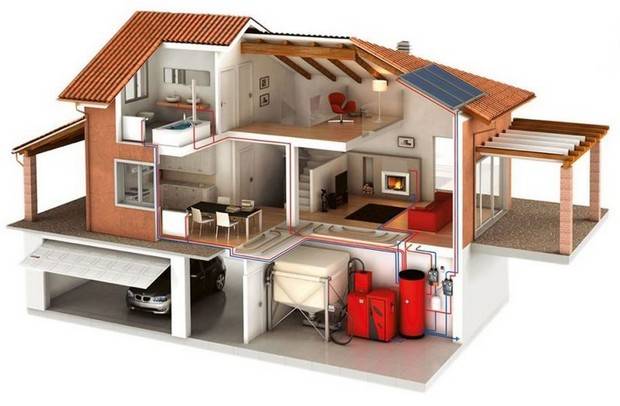
Placement of boilers for heating in the house
Above, we were talking exclusively about boilers that are used exclusively for heating. If the appliance is used to heat water, the calculated power should be increased by 25%
Please note that the reserve for heating is calculated after correction, taking into account climatic conditions. The result obtained after all calculations is quite accurate, it can be used to select any boiler: gas on liquid fuel, solid fuel, electric
Method number 1 - the easiest
According to this method, it is necessary to calculate the heated area, divide it by ten (based on the well-known formula - 0.1 kW of heat is needed for heating 1 m2). And then multiply by 1.5, that is, with this coefficient, take into account heat losses through windows, walls, doors, floors, roofs, the northern arrangement of windows, non-density of structures, etc.
This method is good for those who are not used to saving. Who does not care whether to buy a boiler with a capacity of 50 or 100 kW. But for the majority of the population, it is not suitable. In most cases, with such a calculation, we obtain an unjustifiably overestimated required boiler power. And this is the main factor affecting its price. In addition, due to a significant overshoot in power, the automation will turn off the equipment too often, which negatively affects its service life. The same can be said about the boiler model, which is working to the limit of its capabilities.
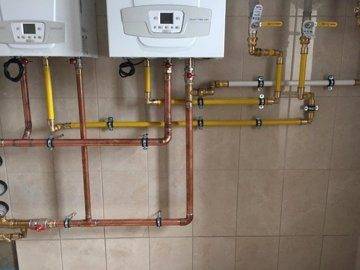
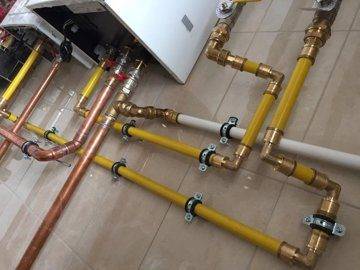
Dissipation factor
The dissipation factor is one of the important indicators of heat transfer between a living space and the environment. Depending on how well the house is insulated. there are such indicators that are used in the most accurate calculation formula:
- 3.0 - 4.0 is the dissipation factor for structures in which there is no thermal insulation at all. Most often, in such cases, we are talking about temporary huts made of corrugated iron or wood.
- A coefficient from 2.9 to 2.0 is typical for buildings with a low level of thermal insulation. We mean houses with thin walls (for example, one brick) without insulation, with ordinary wooden frames and a simple roof.
- The average level of thermal insulation and the coefficient from 1.9 to 1.0 are assigned to houses with double plastic windows, insulation of external walls or double masonry, as well as with an insulated roof or attic.
- The lowest dissipation coefficient, from 0.6 to 0.9, is typical for houses built using modern materials and technologies. In such houses, the walls, roof and floor are insulated, good windows are installed and the ventilation system is well thought out.
Heating cost calculation table in a private house
The formula in which the value of the dissipation coefficient is applied is one of the most accurate and allows you to calculate the heat loss of a particular structure. It looks like this:
In the formula, Qt is the level of heat loss, V is the volume of the room (the product of length, width and height), Pt is the temperature difference (to calculate, it is necessary to subtract from the desired temperature in the room the minimum air temperature that can be at this latitude), k Is the dissipation factor.
Let's substitute the numbers in our formula and try to find out the heat loss of a house with a volume of 300 m³ (10 m * 10 m * 3 m) with an average level of thermal insulation at a desired air temperature of + 20 ° C and a minimum winter temperature of -20 ° C.
Having this figure, we can find out how much power the boiler is needed for such a house. To do this, the resulting value of heat loss should be multiplied by a safety factor, which is usually equal to from 1.15 to 1.2 (the same 15-20%).We get that:
Having rounded the resulting number down, we find out the required number. To heat a house with the conditions set by us, you will need a 38 kW boiler.
Such a formula will allow you to very accurately determine the power of a gas boiler required for a particular house. Also today, a wide variety of calculators and programs have been developed that allow you to take into account the data of each individual structure.
Heating a private house with your own hands - tips for choosing the type of system and type of boiler Requirements for installing a gas boiler: what is necessary and useful to know about the connection procedure? How to correctly and without errors calculate heating radiators for a house Water supply system of a private house from a well: recommendations for creating
How to calculate the cost of heating a house with a boiler
To calculate the required performance of equipment and costs, you need to understand what kind of climate, area, volume of living space, degree of insulation and amount of heat loss
When using turbine devices for this, it is also necessary to take into account the amount of energy that is spent on heating the air. To determine the productivity and costs of the boiler, you first need to calculate the heat losses
It is difficult to do this, since a large number of components must be taken into account, in particular, materials for the construction of walls with ceilings, roofs, and the like. You should also understand the type of heating wiring, the presence of a warm floor and household appliances that generate heat.
Thermal imagers are used by professionals to accurately calculate heat losses and heating costs. Then they calculate the required indicator using complex formulas. Naturally, an ordinary user will not understand what the nuances of thermal technology are. For them, there are available techniques that allow a quick and optimal way to make calculations of the optimal performance of the equipment.
The most affordable way is to use the universal formula, where 10 square meters equals 1 kilowatt. In accordance with the pricing policy of the region, the cost of 1 cubic meter of gas costs about 4 rubles during the day and 3 rubles at night. As a result, the heating season will have to spend 6,300 rubles per 10 square meters.
You can find out the amount of optimal performance of the heater using a handy calculator. To calculate everything correctly and get the final result, you will need to enter the total heating area. Next, you need to fill in information about what type of glazing, the level of insulation of walls with floors and ceilings is used. Of the additional parameters, they also take into account the height of the ceiling in the room, the introduction of information about the number of walls that interact with the street. They also take into account the fact how many floors are in the building and whether there are structures on top of it. Only after that you can find out the current prices for 1 cubic meter and calculate everything.
Area calculation
It is more accurate because it takes into account more factors. The calculation is made according to the formula:
Q = 0.1 * S * k1 * k2 * k3 * k4 * k5 * k6 * k7, where:
0.1 kW is the heat rate per 1 sq. m;
S is the area of the heated house;
k1 demonstrates the heat loss caused by the construction of the windows. Has the meaning:
- 1.27 - if the windows have one glass;
- 1.0 - if there are double-glazed windows;
- 0.85 - if there are triple-glazed windows.

K2 demonstrates heat loss due to window area (Sw). Is the ratio of Sw to floor area Sf. Its meanings are:
- 0.8 at Sw / Sf = 0.1;
- 0.9 at Sw / Sf = 0.2;
- 1 at Sw / Sf = 0.3;
- 1.1 at Sw / Sf = 0.4;
- 1.2 at Sw / Sf = 0.5.
k3 is the coefficient of heat loss through walls. It happens like this:
- 1.27 with very poor thermal insulation;
- 1 in houses with a wall of 2 bricks or insulation, the thickness of which is 15 cm;
- 0.854 with good thermal insulation.
k4 shows the heat loss depending on the air temperature outside the house (tg). Has the following meanings:
- 0.7 if tz = -10 ° C;
- 0.9 for tz = -15 ° C;
- 1.1 for tz = -20 ° C;
- 1.3 for tz = -25 ° C;
- 1.5 for tz = -30 ° C.
k5 demonstrates heat loss through external walls. Is this:
- 1.1 for rooms with one outer wall;
- 1.2 for 2 outer walls;
- 1.3 for 3 outer walls;
- 1.4 for a building with 4 outer walls.
K6 shows how much additional heat is required depending on the height of the ceiling (H). Its meanings are:
- 1 for H = 2.5 m;
- 1.05 for H = 3.0 m;
- 1.1 for H = 3.5 m;
- 1.15 for H = 4.0 m;
- 1.2 for H = 4.5 m.
k7 determines the heat loss depending on the type of room placed above the heated room. It happens like this:
- 0.8 for heated rooms;
- 0.9 for a warm attic;
- 1 for a cold attic.
Example. The problem conditions are the same. The windows are triple-glazed and account for 30% of the floor area. The number of external walls is 4. Upstairs there is a cold attic.

Q = 0.1 * 200 * 0.85 * 1 * 0.854 * 1.3 * 1.4 * 1.05 * 1 = 27.74 kWh. This figure must be increased by adding with your own hands the amount of heat required for hot water supply.
Calculation of the number of sections of heating devices
The heating system will not be efficient if the optimal number of radiator sections is not calculated. An incorrect calculation will lead to the fact that the rooms will be heated unevenly, the boiler will work at the limit of possibilities, or, conversely, “idle” wasting fuel.
Some homeowners believe the more batteries the better. However, this lengthens the path of the coolant, which gradually cools down, which means that the last rooms in the system risk being left without heat. Forced circulation of the coolant, in part, solves this problem. But one must not lose sight of the power of the boiler, which may simply not "pull" the system.
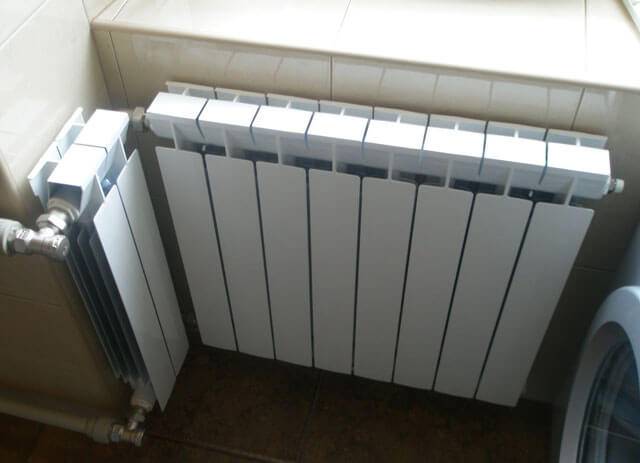
To calculate the number of sections, you need the following values:
- the area of the heated room (plus an adjacent one, where there are no radiators);
- the power of one radiator (indicated in the technical specification);
take into account that 1 sq. m
living space will require 100 watts of power for central Russia (according to the requirements of SNiP).
The area of the room is multiplied by 100 and the resulting sum is divided by the power parameters of the installed radiator.
An example for a room of 25 sq. meters and a radiator power of 120 W: (20x100) / 185 = 10.8 = 11
This is the simplest formula, with non-standard room heights or their complex configuration, other values are used.
How to correctly calculate the heating in a private house if the radiator power is unknown for some reason? The default is an average static power of 200 W. You can take the average values of certain types of radiators. For bimetallic, this figure is 185 W, for aluminum - 190 W. For cast iron, the value is much lower - 120 watts.
If the calculation is carried out for corner rooms, then the result obtained can be safely multiply by a factor 1,2.
Calculation of power for DHW
It is carried out in the following sequence:
- The volume of warm water that all family members use is determined.
- The volume of hot water (90-95 ° C) is determined, which will be diluted by running water to form a liquid that has a comfortable temperature for the body.
- The additional boiler output is calculated.
So, let a family live in the house, which uses 150 liters of warm water per day, that is, liquid with a temperature of 37 ° C. This water will be supplied after mixing hot and running water. The volume of hot water is determined by the formula:
- Vw is the volume of warm water demanded,
- Tzh - the desired temperature of warm water at the outlet from the tap,
- Тп is the temperature of the flowing water,
- Tg is the temperature of the heated liquid in the indirect boiler.
For the above example, Vw = 150 l, Tp = 8 ° C, Tg = 37 ° C, Tg = 95 ° C. Vg = 150 * (37-8) / (95-8) = 50 liters. This means that a 50 liter boiler is enough for the house.
The formula for determining additional power is as follows:
where c is the specific heat of water (always equal to 4.218 kJ / kg * K),
ΔT is the difference between the temperatures of heated and running water.
Pd = 4.218 * 50 * (95-8) = 18 348.3 kJ. In terms of kWh, this figure is 5.1 kWh.
As you can see, for heating a house, you need to purchase an electric heating boiler with a capacity of 20 + 5.1 = 25.1 kW / h. This is the case if the water in the boiler must be heated in 1 hour. If it needs to be heated in 2, then you can install a boiler, the power of which is 20 + 2.55 = 22.55 kW / h.
Power and number of sections of aluminum radiators Connecting the electric boiler to the heating system Manufacturing the Scorpion electric boiler Power of heating radiators
conclusions
The selection of heating equipment is a difficult and responsible task. You should not immediately chase models of solid fuel units that have high power. In some cases, the installation of a unit with output parameters of 24-36 kW is quite enough for heating a residential building. At a temperature outside the window of -30 ° C, such a boiler will make it possible to create a temperature inside the room of + 20-22 ° C and heat the water in the hot water system to 40-45 ° C.
In each individual case, you can make a choice in favor of one or another type of heating technology

A large boiler output may be required in peak situations, when climatic conditions force the heating system to work in an increased mode. However, such situations are not systematic, and most of the time your heater will operate at reduced settings. If you have a high consumption of hot water for domestic purposes, then you should immediately focus on equipment of greater power. In modern private houses, more than 50% of the power of the heating equipment is used to provide hot water to the inhabitants of the house.
Connecting a "warm floor" heating system also makes you pay attention to boiler equipment with a higher power
It is necessary to select a boiler not only on the basis of its actual power. The operational capabilities of heating equipment, the method and quality of maintenance of boiler equipment play a role here. Using the optimal type of fuel for your heating equipment, the presence of automation will allow you to achieve normal operation of a solid fuel boiler.
When choosing a solid fuel boiler, power must be provided. It depends on it whether the device can create the required amount of heat for the whole house or not. It is undesirable to choose a boiler that is too powerful, because it will work in the economy mode, and this will affect the decrease in efficiency.
To make the right choice of a solid fuel boiler, you need to know two indicators:
- The amount of heat required for space heating and water heating.
- The real power of the device.

